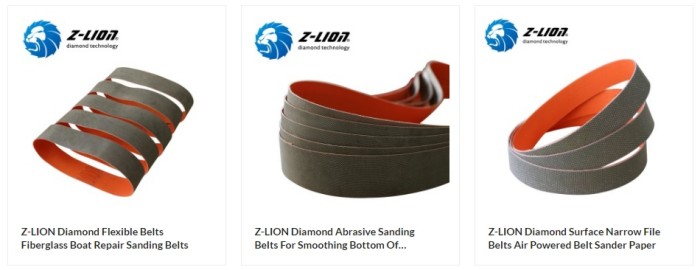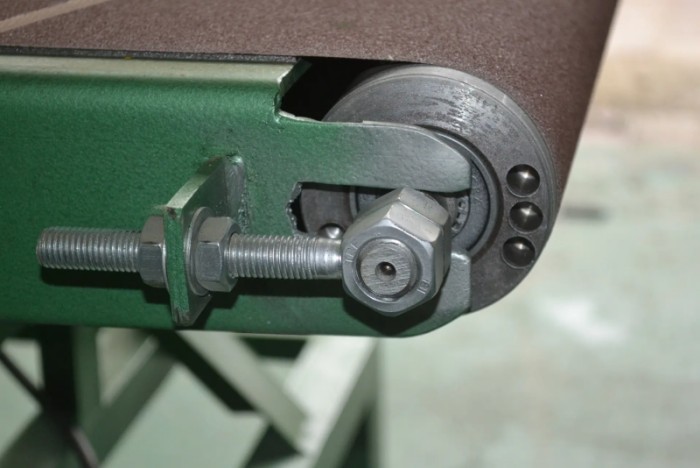Belt sanders are essential tools in every industry, but they generate a lot of dust during operation. By taking dust control measures and ventilation and cooling measures, the impact of dust on the environment and workers can be effectively reduced.
Sanding Dust From Belt Sanders
A belt sander is a general-purpose tool commonly used for sanding, polishing, and finishing workpieces. Belt sanders generate large amounts of sand and dust when operating, posing potential risks to workers and the environment. The accumulation of sand and dust not only harms the health of workers but also affects the performance of electrical equipment. Therefore, effective measures must be taken to control and mitigate the impact of sanding dust generated by belt sanders.
Health and environmental effects of grinding dust:
The dust and debris produced by a belt sander may contain fine particles that are harmful if inhaled. These particles can enter the respiratory system and cause respiratory illness and other health problems in workers. Additionally, the accumulation of dust in the work environment can create slip hazards and lead to reduced air quality, affecting overall health and safety in the workplace.
Additionally, the presence of sand and dust can affect the performance and lifespan of electrical equipment, potentially leading to malfunctions and reduced operating efficiency. The accumulation of dust on electrical components can impair their functionality and create a fire hazard, so effective dust control measures are required.
How to Effectively Control Dust?
Controlling sand and dust is critical to ensuring a safe and healthy working environment and minimizing the impact on equipment and surrounding areas. By taking effective measures, the generation and spread of sand and dust can be controlled, potential hazards reduced, and workplaces cleaner and safer. Here are some key strategies for effective sand and dust control:
1. Maintain good ventilation: Adequate ventilation is essential to control sand and dust in the workplace. When using sanding or grinding equipment, make sure the building is well-ventilated to allow air circulation. Use ventilation equipment to circulate air, reduce the concentration of particulate matter in the air, and minimize the impact of sand and dust on workers and the environment.
2. Strengthen dust removal equipment: Optimizing the function of dust removal equipment is crucial for effective sand and dust control. Advanced dust collection systems, such as dust collectors, wet dust collectors, and electrostatic dust collectors, can be used to capture and contain airborne particles. By investing in high-quality dust collection equipment, you can significantly reduce the impact of sand and dust on the environment, helping to create a cleaner, healthier workplace.
3. Regular Cleaning: Implement a regular cleaning program to remove accumulated sand, dust, and waste from work areas and equipment. Regular cleaning helps minimize the impact of dust on workers and equipment, promoting a cleaner, safer working environment. Additionally, keeping machinery and work areas clean helps your equipment operate efficiently and safely.
By paying attention to these aspects, the impact of sand and dust can be effectively controlled, creating a safer and more efficient work environment. By implementing proper ventilation, advanced dust collection equipment and regular cleaning measures, dust-related hazards can be minimized, ensuring worker well-being and equipment longevity. Furthermore, compliance with these measures demonstrates a commitment to environmental stewardship and compliance with occupational health and safety regulations.
How to Effectively Control Belt Sander Dust?
In addition to the previously mentioned methods, there are other measures you can take to effectively control the dust produced by your belt sander. By implementing these measures, the impact of sand and dust on the environment and workers can be further reduced, promoting a cleaner and safer working environment.
1. Use high-quality sanding belts: Using high-quality sanding belts can help reduce the generation of dust during sanding operations. High-quality belts are designed to minimize the generation of dust, helping to create a cleaner, more controlled work environment. By investing in a high-quality abrasive belt, you can effectively reduce the amount of dust generated, thereby mitigating potential hazards.
2. Timely replacement of abrasive belts: Regular replacement of abrasive belts is very important to minimize loss and friction, thereby reducing the generation of dust from the source. By ensuring timely replacement of sanding belts, you can maintain the efficiency of your sanding process while also reducing the amount of dust generated during the operation.
3. Workplace controls and standards: Strengthening workplace controls and enforcing relevant standards and specifications can help reduce the generation of excessive dust. The environmental impact of dust can be minimized by establishing and enforcing cleaning standards and implementing effective dust control measures. This includes regular cleaning of work areas and taking steps to reduce the spread of dust and debris.

In summary, the belt grinder generates a large amount of dust, but by implementing comprehensive control measures and preventive measures, the impact of sand and dust on the environment and workers can be effectively reduced. By using high-quality abrasive belts, ensuring timely belt replacement, and strengthening workplace controls and standards, the generation and impact of belt sander dust can be effectively managed to create a safer, healthier working environment for everyone.
Post time: Aug-23-2024

